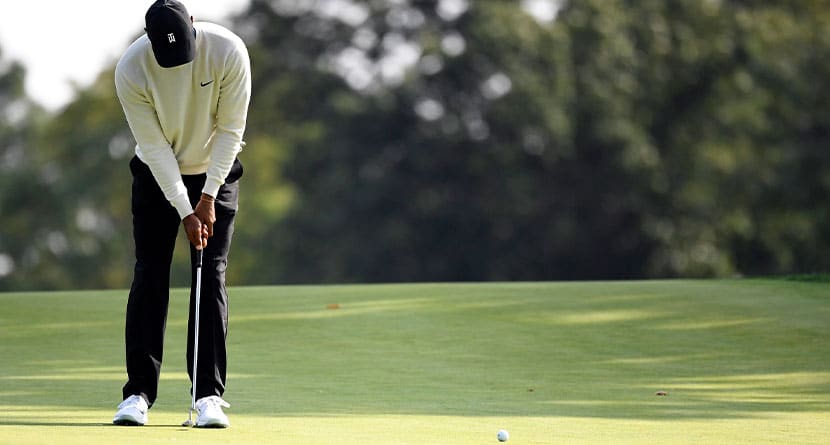Putting is 40% of the game at virtually every handicap level.
The higher the scoring level, the more putts are needed, but the ratio of the number of putts to score holds steady – that is, up until the 20+ handicaps. At this level, the pickup holes with no putts recorded slightly lower the percentage.
So what are the two skills?
- Short putts: Line and accuracy are crucial inside 10 feet. Practicing a solid setup and alignment routine will help ensure consistent accuracy.
- Distance control: For longer lag putts, the most important skill to develop is feel because distance control is more important than line.
How much should you practice each skill?
A study of putting distances faced by the average golfer (15-19 handicap) reveals that practice time should be split 80% short putts / 20% distance control. That’s because 83% of total putts during an average round occur inside 10 feet. When looking at just first-putt opportunities outside 10 feet, 88% fall between 11 and 40 feet; only 12% at 41+ feet.
To practice your distance control, I recommend spending time gaining confidence in your 30-foot lag. You can then make all other lag putts a function of that stroke. It is very important when playing away from home to set up 30-foot tees and putt back and forth (I use two balls) until that distance becomes almost automatic.
When you hit the first green, you will be ready to stroke the first putt with confidence.
Work with your instructor on the specific practice drills for each skill, but your goals should be:
Short putts: Increase your 50% Make distance – the distance from which you hole 50% of your putts. See where you are on the graph below.

Distance control: Work to expand your 2.00 putt distance – the distance from which you two-putt the vast majority of the time, but one and three-putt with the same frequency on the rest. Again, see where you fit on the graph below and work to extend your 2.00 distance.

You will need a way of accurately recording and analyzing your putting distances. I recommend SwingU Versus Powered by ShotByShot.com. Self-serving? Perhaps, but it’s the only place I know where you can easily and accurately get the information you need to determine your exact strengths and weaknesses, and why.
Determining your putting distances? I recommend that you build this into your pre-shot, putting routine.
When you reach the green, you need to mark your ball and walk to the flag. Simply count your steps.
For the longer putts, get to the midpoint – check the break – and count your steps back to your ball. Then double the number.
Finally, know the distance of your average stride – heel to heel. I am 6’1” and my average walking stride is 28 inches. I have to stride out a bit to average 3 feet, something that I actually practiced in my living room until it became automatic.
Peter Sanders is the President and a founding partner of ShotByShot.com, the system SwingU uses for its Versus product.
Peter has worked with PGA Tour players and major champions such as Zach Johnson, Lucas Glover, Smylie Kaufman, Zack Sucher, Sepp Straka, Dylan Frittelli and Michael Thompson to analyze and interpret their data for game improvement.




